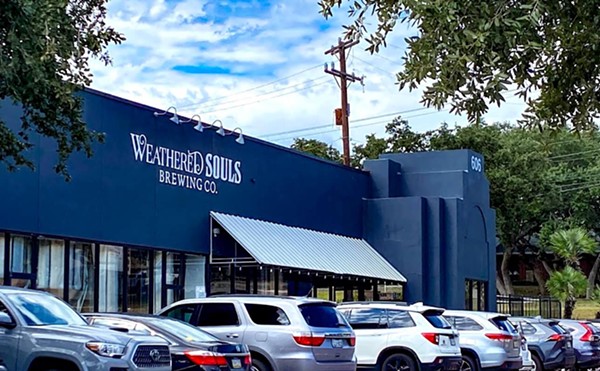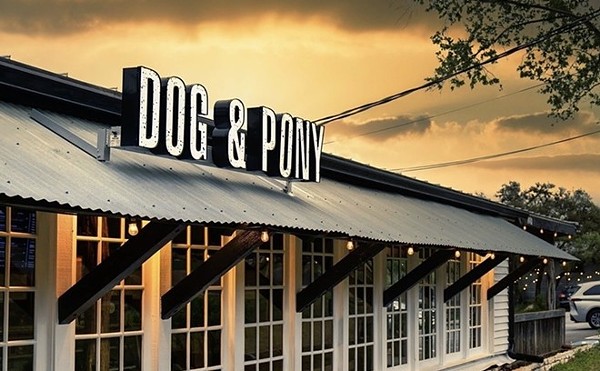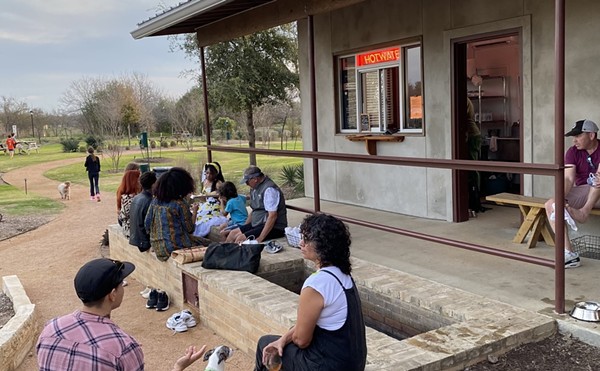It really does make sense that chefs in training would be interested in sustainable sources of food. After all, their future career would be moot if quality produce, meats, and fish were no longer available. They’d become Soylent Green chefs. Not an appetizing prospect.
Supporting sustainable and local sources for food is a hot topic among professional and amateur foodies alike. No doubt you’ve noticed the rising interest in farmers’ markets carrying locally grown produce and the greater number of restaurants that list the origin of the meats, poultry, and fish they serve. It’s not just a trend; it is a necessity if our burgeoning population is going to survive and thrive.
So it should be no surprise that San Antonio’s Center for Foods of the Americas focuses its students on the subject early and often. The school’s Director of Education, Shelley Grieshaber, says the impetus for this emphasis doesn’t come exclusively from the culinary industry. “The vision of the Pearl Brewery complex includes sustainability, being ‘green’ and being responsible to the community,” she explains. “And our curriculum fits right in with their vision.”
During the first weeks of the CFA 30-week course, the focus is entirely on product knowledge, introducing students to the wide variety of ingredients they’ll be working with. “I’d say about 90 percent of our students haven’t learned about sustainability and sourcing products locally,” says Grieshaber. “The majority of them have never even tasted a radish or a leek, let alone shopped for one.”
You know what that calls for: field trip!
There’s no better way to bond with your food than to visit it at home. See where it comes from and how it grows. Find out what nourishes it. Gaze at it in its pristine state. Watch as experienced hands and hearts care for it.
So Grieshaber and her instructor-chefs take a gaggle of chefs-in-waiting to San Antonio area purveyors for some up-close and personal experiences. They view a high-tech approach to growing greens and micro-greens, soil-free, at Bluebonnet Hydroponic Produce. They traipse through the Produce Terminal and experience the bounty of seasonal wholesale produce. They wander through Groomer’s Seafood for a clear-eyed discussion of freshness, flavor, and the chef’s role in keeping our oceans filled for the future. They receive meaty details at Broken Arrow Ranch, the country’s leading purveyor of wild game. And they buy into food-safety practices in the real world in the receiving area of Central Market.
“The field trips really open the students’ eyes to so many opportunities. So far, not a single student had ever seen a hydroponic farm before visiting Bluebonnet. It really opens their minds to alternatives to conventional produce,” says Grieshaber. “They also get to see many examples of how close-knit families can work together to produce a high-quality product. These experiences get them excited about what they can do in their own restaurants and how they can become responsible chefs.”
To extend the field trip, Grieshaber is planning a garden for the CFA students, albeit more gourmet than others. “Les Dames d’Escoffier has offered to help us start a garden near the school. We haven’t selected the site yet, but it’s going to be a fun project,” she says. You can’t get more hands-on with your herbs and produce than that.
Two down, thousands more to go
The first two classes have graduated from the CFA and two more are currently in session. So far, students have ranged in age from 17 to 53, bringing world-view diversity to every session. The school enrolls up to 18 students per class, so it’s an intimate experience.
And it’s intense. Students attend a six-and-a-half-hour session, from 7 a.m.-1:30 p.m. or 2 p.m.-8:30 p.m., five days a week for 30 weeks. After successfully completing the mixture of classroom and in-kitchen learning, they emerge with a Culinary Arts Certificate, equivalent to completing the first year of basics at the prestigious Culinary Institute of America.
The CIA is intimately involved with the CFA, and works in consultation with the school. Guest CIA faculty come in to teach culinary fundamentals, and give the students a taste of professional chefs. “It’s wonderful to see the effect some of the chefs have on the students,” says Grieshaber, a CIA grad herself. “I hear them interacting and saying ‘Yes, Chef,’ and ‘Right away, Chef,’ and ‘Thank you for your help, Chef,’ and I know they’re learning more than just how to cook; they’re learning kitchen etiquette.”
Even though CFA is a new environment for them, the students don’t show up here without knowing one end of a knife from the other. Applicants must have at least six months of hands-on work experience in a commercial kitchen where fresh ingredients are used. They must also submit a recommendation from a professional within the culinary industry. “We’ve accepted students right out of high school who were in a high-school culinary program. And we’ve enrolled students who have been professional cooks for years and have just never gotten a formal education,” says Grieshaber. “Most everyone works a full- or part-time job in addition to attending classes.
“This isn’t a program for lazy people,” she laughs.
The curriculum is broken into 10 three-week blocks and students work through the basics first, learning culinary math (how many chickens does it take to feed a banquet?), food safety, the aforementioned product knowledge and sourcing, the history of modern gastronomy, and the importance of professional behavior.
Several sections of Culinary Skill Development provide theories and instruction on the techniques of cooking, with daily hands-on cooking time. As the students advance, they follow recipes to the letter on one day, preparing their own lunch or dinner, and get creative with the recipe on the second day. This building-block approach makes chefs out of cooks — and reinforces the lessons learned about ingredients and flavors.
The school’s name seems to imply that “the Americas” are emphasized here. They are. The hugely diverse cuisines of Europe and the Mediterranean, including ingredients and dishes of the Middle East, Spain, France, Italy, and Eastern Europe, are covered in a single three-week block. A separate three-week block is dedicated to the cuisines of the U.S., Central America, South America, and the Caribbean.
“These classes help students focus on why and how cultural traditions influence food ingredients,” explains Grieshaber. “For example, why are chilies prevalent in cooking in the Southwestern U.S., yet in the Northeastern part of the country you find more classic European flavor profiles?”
The CFA also works hard to reach out to Hispanic students. “Traditionally, these folks are the backbone of the food-service industry. Yet they’re not paid as well, and don’t always pursue a higher position. So we want to help them break through the glass ceiling and give them a leg up in the industry through education,” says Grieshaber. The school has Spanish translators available, although the spoken word is rarely where they come into play. “We’re finding there’s a need for help with English reading skills. So, we have Spanish versions of our tests and quizzes for those who prefer to take them that way.”
Word of the new school is getting out beyond San Antonio and application numbers are increasing rapidly. The next class begins May 25; the application deadline is April 15. For details, go to Foodsoftheamericas.org.

















